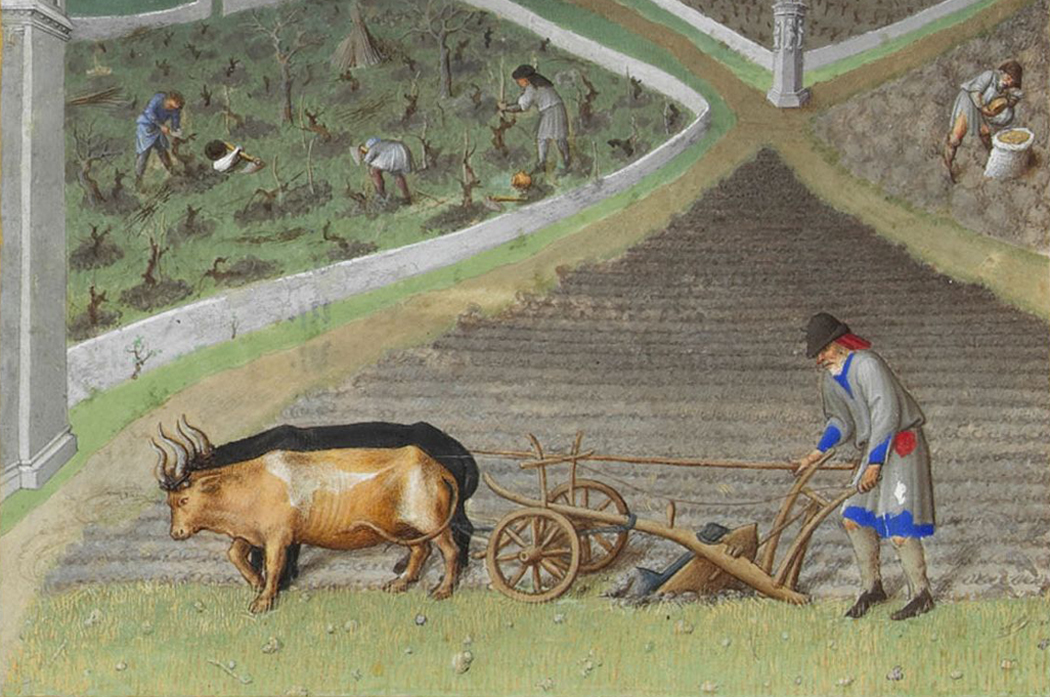The heavy plough fostered an agricultural revolution in Medieval Europe, which led to population increase and the foundation of new towns
The Heavy Plough and the Agricultural Revolution in Medieval Europe
By Thomas Andersen, Thomas Barnebeck Andersen, Jensen, Peter Sandholt Jensen and Christian Volmar Skovsgaard,
In: Journal of Development Economics (2015)
DOI: 10.1016/j.jdeveco.2015.08.006
The earliest plough, commonly known as the ard or scratch-plough, was suitable for the soils and climate of the Mediterranean; it was, however, unsuitable for the clay soils found in most of Northern Europe, which “offer much more resistance to a plough than does light, dry earth” (White 1962, p. 42). The consequence was that Northern European settlement before the Middle Ages was limited to lighter soils, where the ard could be applied.
The heavy plough and its attendant advantages may have been crucial in changing this. However, establishing the veracity of this hypothesis has been notoriously difficult. However, for some time agricultural historians have worked to establish the evidence by studying the correlation between the introduction of the heavy plough, which took place around AD 1000 and the foundation of cities in Scandinavia in the following period.
Recently an overview of the results of this research project has been published.
This research sheds new light on the much-debated link between agricultural productivity and development. It is done by by estimating the causal impact of a large shock to agricultural productivity—the introduction of the heavy plough in the Middle Ages—on long term development. Building on the work of Lynn White, Jr. (1962), who argued that it was impossible to take proper advantage of the fertile clay soils of Northern Europe prior to the invention and widespread adoption of the heavy plough, the historians have implemented the test in a difference-in-difference set-up by exploiting regional variation in the presence of fertile clay soils.
Using a high quality dataset for Denmark, they have found that historical counties with relatively more fertile clay soil experienced higher urbanization after the heavy plough had its breakthrough, which was around AD 1000. The have established that the introduction of the heavy plough could account for more than 40% of the new towns founded after 1000 AD. They obtained a similar result, when the test was extended to European regions.
Their findings substantiate that agricultural productivity can be an important driver of long-term development. Thus the results are consistent with the much-debated hypothesis of Lynn White, published in 1962
It is to be hoped that this groundbreaking research will be extended to follow the connection between soil-types and the construction of massive Romanesque Cathedrals in the 11th century Europe, like those in for instance Hildesheim and Paderborn. Though founded earlier it is exactly around this time these grandiose buildings were instigated.
THE AUTHORS:
Thomas Barnbeck Andersen and Peter Sandholdt Jensen are professors at the University of Southern Denmark. Christian Skovsgaard is writing his PhD there.
READ MORE:
Read a first presentation of the project:
